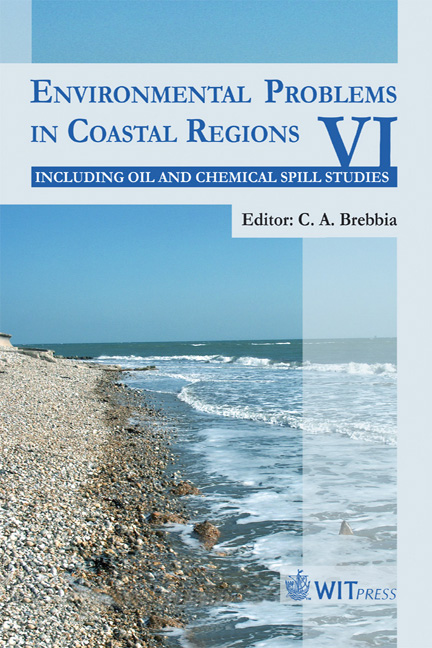Environmental Impact Of Saltwater In A Stratified Flow System And Its Remedial Measure
Price
Free (open access)
Transaction
Volume
88
Pages
10
Published
2006
Size
493 kb
Paper DOI
10.2495/CENV060031
Copyright
WIT Press
Author(s)
H. N. Hashmi, N. E. Malik & G. A. Hamill
Abstract
Due to the improper mixing of saline water and freshwater within the estuary mouth stratification occurs. The weir obstacle in front of the estuary mouth forms an entrapped saline wedge. When dissolved, oxygen in the saline wedge goes behind a permissible limit and it endangers marine life. The anaerobic decomposition of organic matter at the bottom results in noxious environmental conditions. The same types of problems are being faced at River Lagan bay in Northern Ireland. This paper discusses the application of propeller washes on a stratified flow system to develop a technique to eliminate saltwater. Conductivity, velocity and temperature at different points along the depth in a stratified flow system were observed in detail during this research. Using the flume arrangement an artificial stratified condition so close to natural conditions was produced and tested in the laboratory under different sets of experiments. From the experimental results it was found that the propeller rotating at a higher speed was more effective at mixing stratified layers than that rotating at a lower speed. Experimental results also showed that an increase in propeller-tip clearance from the saltwater layer reduced the rate of erosion of saltwater. Keywords: arrested saline wedge, entrapped saline wedge, multi-wire conductivity probe, flow stratification, stratified flow flume. 1 Introduction Mixing of freshwater and saltwater is a complex process because of two chemically and physically different water bodies that come into contact with each other. Within estuaries, three different mixing regimes have been identified:
Keywords
arrested saline wedge, entrapped saline wedge, multi-wire conductivity probe, flow stratification, stratified flow flume.





